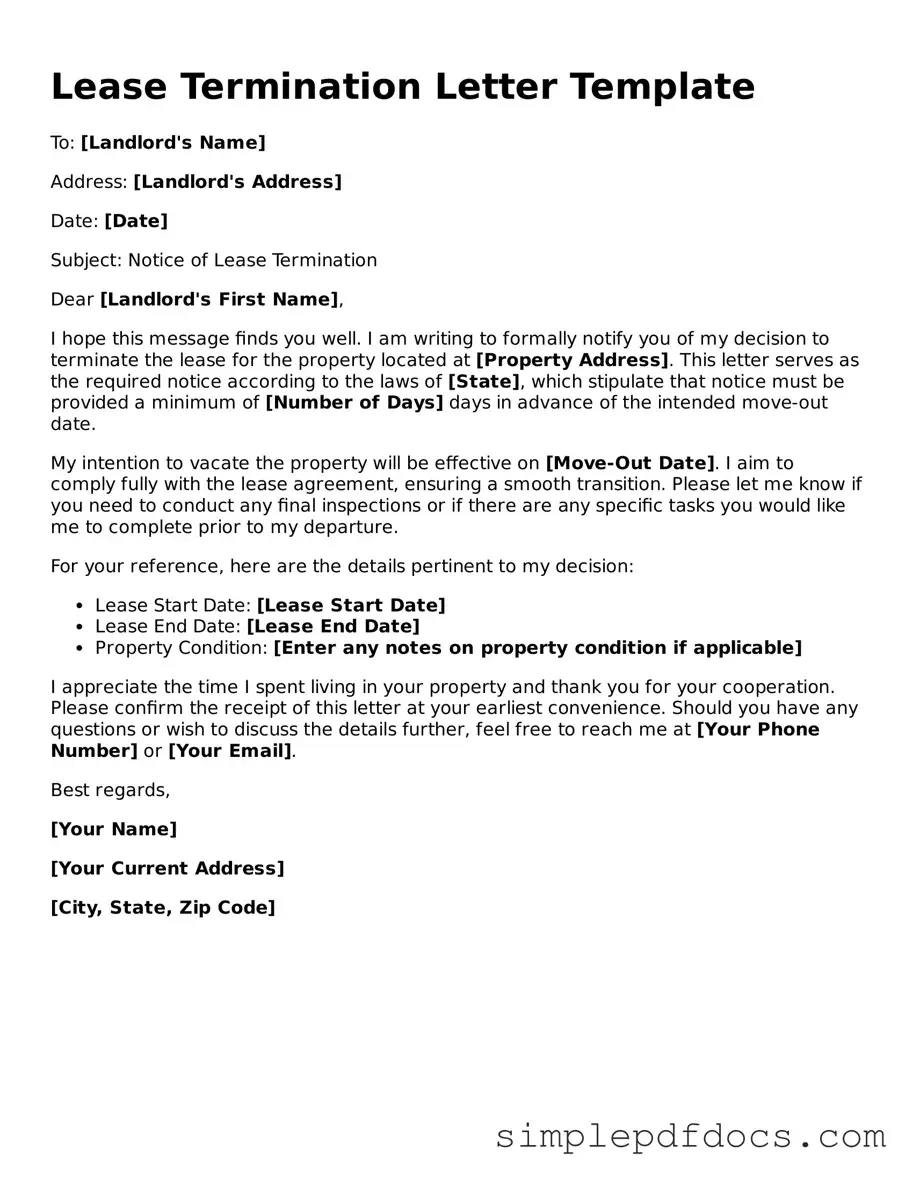Attorney-Approved Lease Termination Letter Form
A Lease Termination Letter is a formal document that notifies a landlord or tenant of the intent to end a lease agreement. This letter serves as an official record of the decision to terminate the lease and outlines important details such as the termination date. Understanding how to properly use this form can help ensure a smooth transition for both parties involved.
Get Document Here
